How to Identify a White-Breasted Nuthatch
Updated: Jul. 10, 2024
The white-breasted nuthatch is adept at clambering up, down or around tree trunks. Learn what they look like and what their call sounds like.
On This Page
White-Breasted Nuthatch Identification
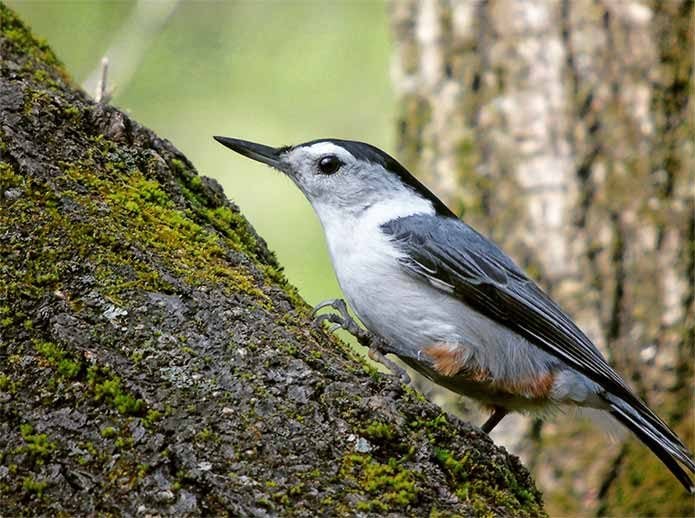
Fall is one of the best times to become familiar with birds that stick around throughout the seasons, such as the charismatic white-breasted nuthatch. These gray-and-white residents don’t like sharing their space with other nuthatches, but will happily hang out with other species at the feeder.
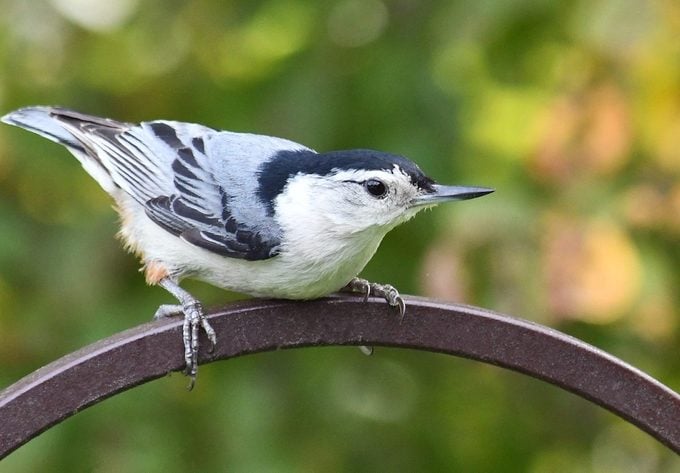
White-breasted nuthatches have short tails, white undersides and are bluish gray on top with a dark cap. They measure 5-1/2 inches with a wingspan of 11 inches, making them the largest of the three types of nuthatches found in the United States. To tell males and females apart, look at their heads. “The male’s cap is jet black, while the female’s is more grayish,” says Emma Greig, project leader of FeederWatch with the Cornell Lab of Ornithology.
Birding experts Kenn and Kimberly Kaufman explain why these birds might be tricky to identify based on the pictures in your field guide. “The nuthatches are famous for being able to climb down tree trunks headfirst, and they’re usually illustrated with their heads down. So when they’re right side up, they may look a little odd or confusing.”
White-breasted nuthatches are common throughout the U.S. Whenever you see a bird going headfirst down a tree trunk, it’s probably a nuthatch. Extremely fun to watch, they are among the most acrobatic bird species.
Watch your fall feeders for a red-breasted nuthatch.
What Do White-Breasted Nuthatches Eat?
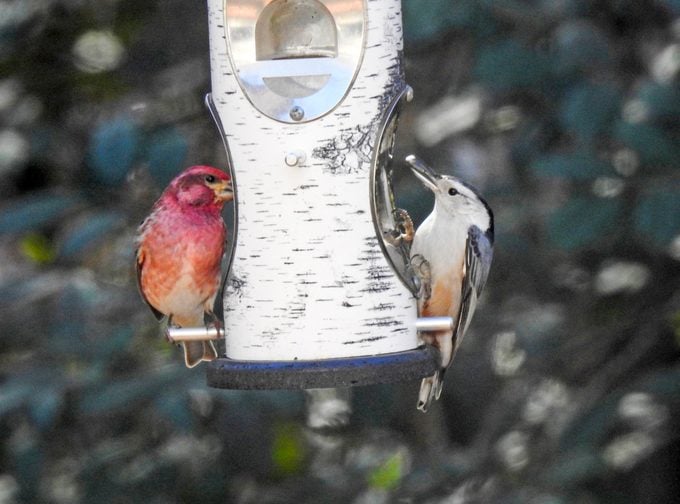
When hunting for spiders, weevils or ants, acrobatic white-breasted nuthatches can clamber up and down around tree trunks, inspecting all the nooks and crannies along the way. Depending on the season, they also eat sunflower seeds, peanuts or mealworms—and they always welcome suet. In winter, white breasted nuthatches trade insects for seeds and nuts like acorns.
With their versatile feeding style, any type of feeder suits them, but Emma says they won’t stay at the feeder for long. “They will take a seed, then crack it and eat it elsewhere. They also cache seeds in tree bark,” she says. Nuthatches may do this to avoid predators or competition with other birds, such as chickadees. Fill up your feeders with treats to get to know the white-breasted nuthatches that call your backyard their home.
Discover the foods nuthatches love to eat.
Nest and Eggs
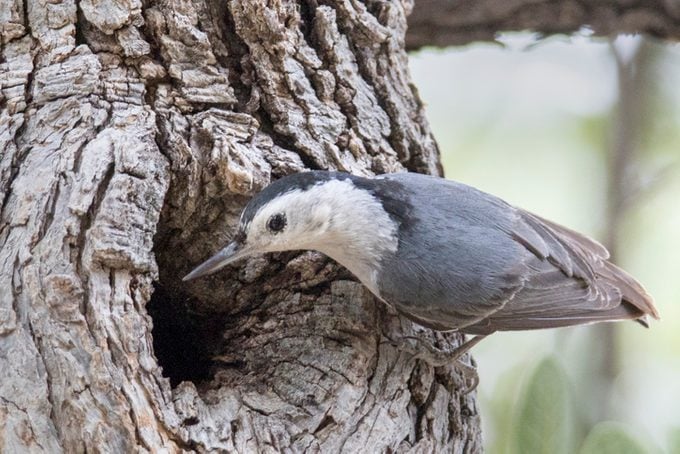
Find white-breasted nuthatches in deciduous woodlands, where they nest in small tree cavities, such as the ones that woodpeckers excavate. Dead trees offer fantastic habitat for nuthatches and other birds. Before removing an old tree on your property, Emma says, “Always remember it might be a good little nuthatch home.”
The female builds a cup-shaped nest, lining it with feathers, grasses and soft materials, where the pair raises one brood of five to nine eggs per nesting season. Their eggs are white with reddish-brown markings.
After building a nest, an adult white-breasted nuthatch sometimes sweeps a crushed insect around the outside of the nest with its bill. The chemicals from the bug might dissuade predators.
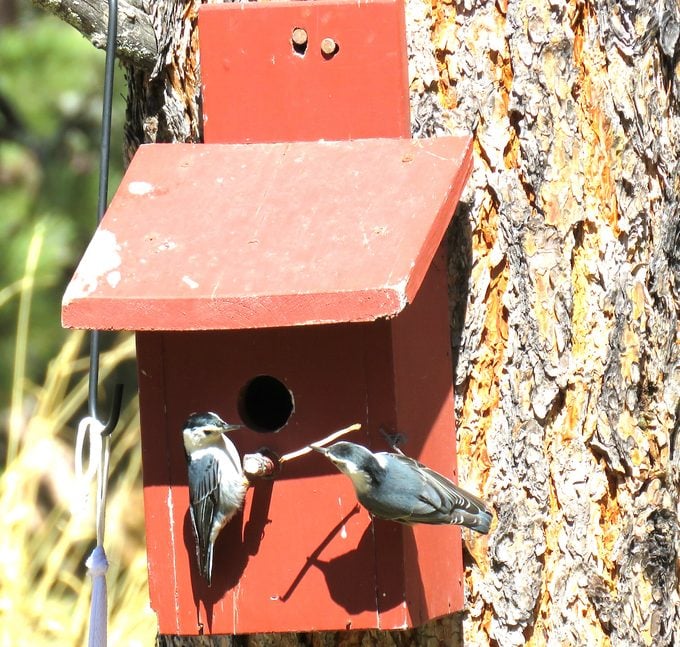
White-breasted nuthatches occasionally use nest boxes, so you may get lucky and have a nesting pair in your backyard.
Learn how to tell the difference between a nuthatch vs a chickadee.
Call and Sounds
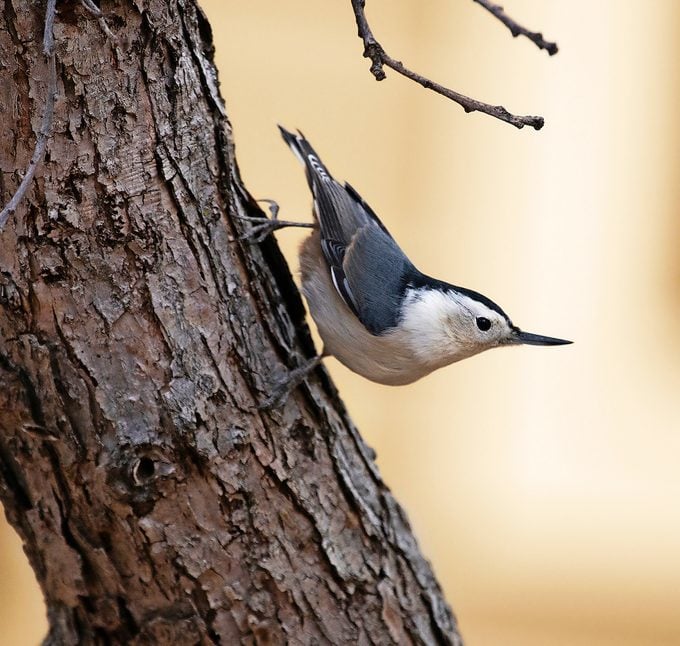
Listen to the white breasted nuthatch’s song. You’ll hear a nasal “yank-yank-yank” call.
Bird songs provided by the Cornell Lab of Ornithology.
“I love hearing the white-breasted nuthatch calls. They’re very distinct, and the way they cling to trees is beautiful,” says Birds & Blooms reader Selena Ross of Colorado Springs, Colorado.
Head south to see a brown-headed nuthatch.
Range Map and Habitat
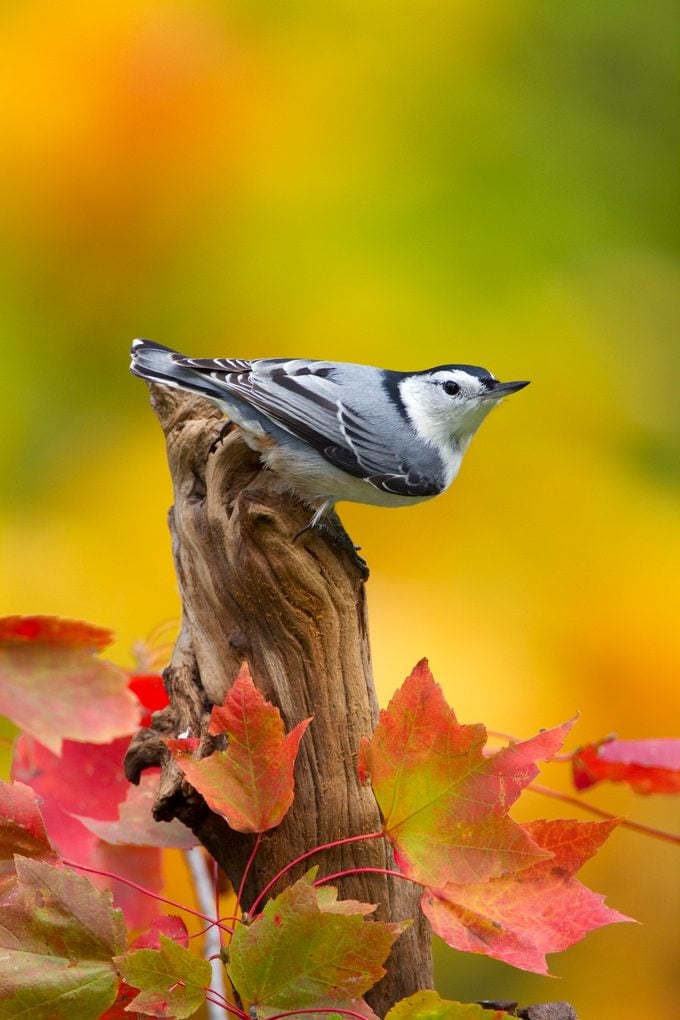
Look for this species in areas with plentiful trees. You can spot them in their range throughout the year.
“They’re a nonmigratory bird,” Emma says. These nuthatches form long-term bonds and defend their home space. She says, “People will have the same pair of birds in their yard. You might see them creeping up and down a tree or on a tube feeder.”
Even though they won’t share their territory with other nuthatches, Emma points out that white-breasteds are neighborly with other birds, flocking with chickadees and titmice. This behavior is common in winter, when it’s beneficial to have more eyes watching for predators.
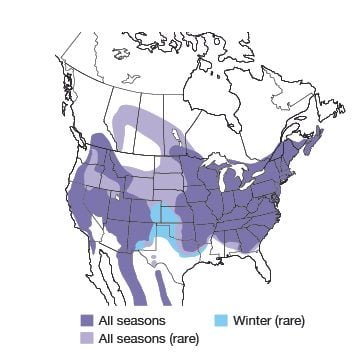
Range maps provided by Kaufman Field Guides, the official field guide of Birds & Blooms.
About the Experts
Emma Greig is the project leader of Project FeederWatch, a citizen science program, for the Cornell Lab of Ornithology. Emma holds a Ph. D. from the University of Chicago and previously was a postdoctoral associate in Macaulay Library.
Kenn and Kimberly Kaufman are the official bird experts for Birds & Blooms. They are the creators of the Kaufman Field Guide series and they lead birding trips all over the world.
Sources
- Cornell Lab of Ornithology
- National Audubon Society
- Kaufman Field Guides





















